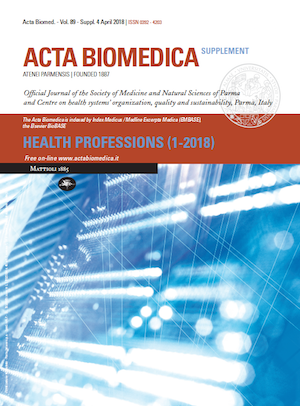A randomized comparison trial of two and four-step approaches to teaching Cardio-Pulmonary Reanimation
Keywords:
4-Step, 2-Step, Cardiopulmonary Resuscitation, Out-of-Hospital Cardiac Arrest, Teaching, Nursing studentAbstract
Background and aim of the work: The treatment of cardiac arrest in an extra-hospital environment improves with the increase in the number of people able to establish an early Cardio-Pulmonary Reanimation (CPR). The main aim of the study was to assess the validity of the two-step method in case of prolonged CPR. Methods: A randomized comparison study was conducted in the University Nursing School of a Northern Italian town, during the 2015/16 academic year, among 60 students, to teach them CPR techniques, through two different teaching methods (4-step and the 2-step of CPR training). The effectiveness of the maneuvers performed on mannequins equipped with skill-meter was verified. Results: Our study did not highlight any significant difference between the two methods of CPR training. The comparison between the two methods regarding their efficacy in practical teaching of CPR, highlighted by this study, proved the validity of both the 4-minute continuous method (1st method) and the 30:2 method (2nd method). Conclusions: The results of the study showed no differences between the 2-step and the 4-step methods, in the effectiveness of cardiac massage. The correct execution of chest compressions during a CPR is the key to increase the patient’s chances of rescue. Research has shown that any interruption in the execution of chest compressions, leads to a progressive reduction of the effectiveness of cardiac massage, with negative consequences on the prognosis of the patient undergoing at CPR.
Downloads
Published
Issue
Section
License
This is an Open Access article distributed under the terms of the Creative Commons Attribution License (https://creativecommons.org/licenses/by-nc/4.0) which permits unrestricted use, distribution, and reproduction in any medium, provided the original work is properly cited.
Transfer of Copyright and Permission to Reproduce Parts of Published Papers.
Authors retain the copyright for their published work. No formal permission will be required to reproduce parts (tables or illustrations) of published papers, provided the source is quoted appropriately and reproduction has no commercial intent. Reproductions with commercial intent will require written permission and payment of royalties.







